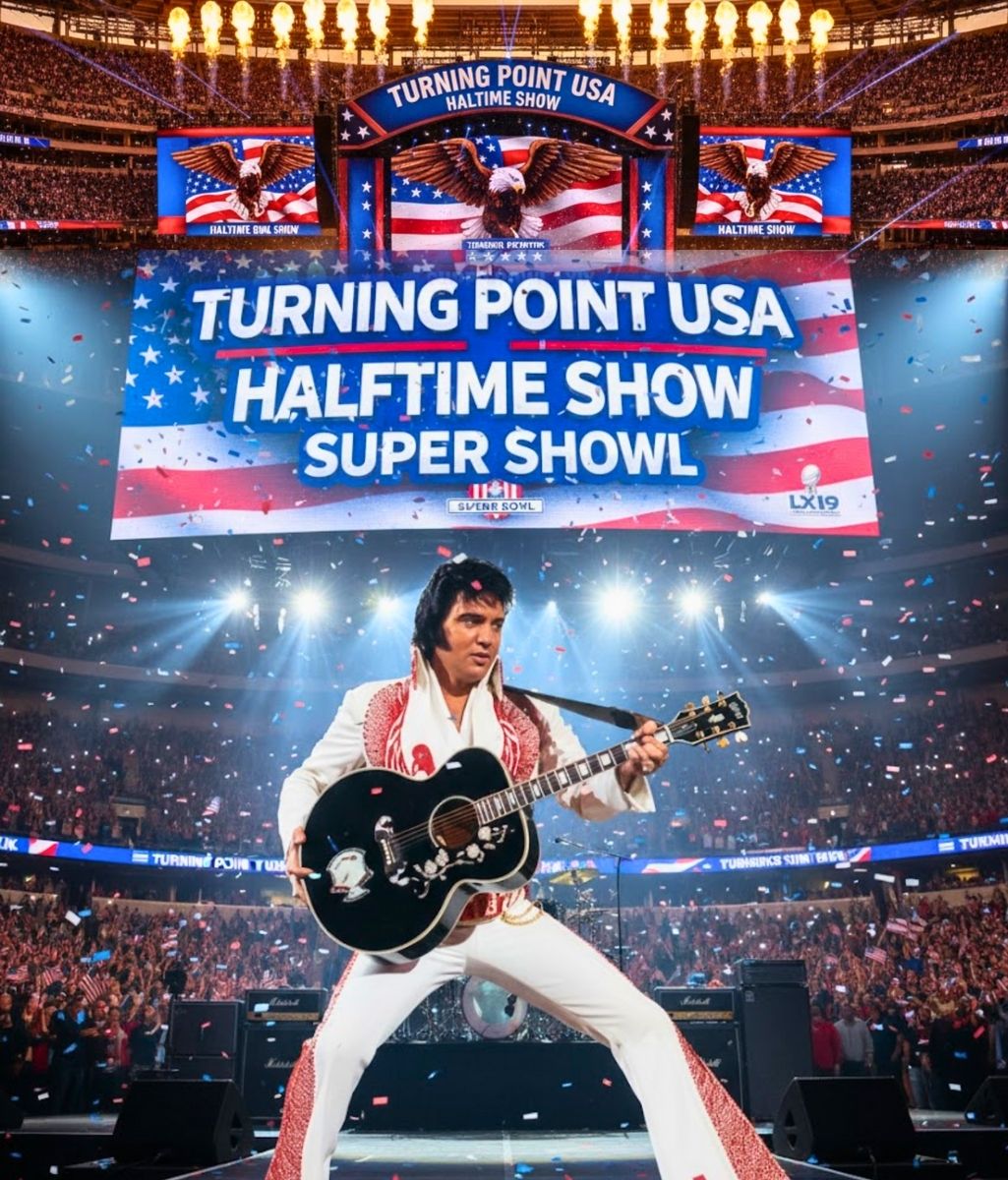
IF ELVIS RETURNED: The Turning Point USA Halftime Show That’s Making the World Imagine the Impossible
It began with a single, electrifying question sweeping across social media feeds everywhere: “Have you seen the Turning Point USA Halftime Show?”
Within minutes, that question became more than curiosity — it became a phenomenon. People around the world couldn’t stop talking, sharing, or speculating. A stadium holding more than 90,000 fans, filled to the brim, and hundreds of millions watching live across continents — this was no ordinary event. It was an earth-shaking celebration of patriotism, music, and star power unlike anything seen in years.
But amid all the buzz, one thought rose above the noise — a wild, beautiful what if.
What if Elvis Presley, the King of Rock ’n’ Roll, could somehow return — just for one night?
Imagine it: the lights dim, the crowd falls silent, and then that unmistakable voice echoes through the stadium. The brass hits, the guitars spark, and the legend himself steps onto the stage — white jumpsuit, golden microphone, and that effortless smile that once set the world on fire. The audience would erupt. Phones would drop. Tears would flow. History would bend in that instant.
The vision of Elvis performing at the Turning Point USA Halftime Show feels like fantasy — yet the energy of this event made it easy to believe. The show itself already carried that same electric spirit, that same unifying magic that defined Presley’s golden era. It wasn’t just a concert; it was an awakening — a bold fusion of faith, country, and classic American showmanship.
From the first chord, the crowd was on its feet. Flags waved. Voices sang in harmony. The entire production felt like a love letter to the nation’s heart — echoing the timeless message that music can heal, inspire, and bring people together.
Those who witnessed it compared it to the great spectacles of the past — the kind of moment when art, memory, and emotion converge. Some called it “the most patriotic show since the dawn of television.” Others said it was “the concert Elvis would’ve loved to headline.”
And truly, one could imagine it: Elvis, center stage, leading a medley of his greatest hits — “If I Can Dream,” “An American Trilogy,” “Can’t Help Falling in Love” — reimagined for a new generation. A choir swells behind him, the orchestra builds, and fireworks burst across the sky in red, white, and blue. For a moment, the world would remember what unity feels like.
Organizers of Turning Point USA had promised something bold — and they delivered. The production rivaled the Super Bowl halftime shows of the past, merging cinematic lighting, massive stage design, and a message that resonated far beyond politics or headlines. It reminded people that entertainment, when guided by purpose, can still move hearts across borders and generations.
As the final song faded and the lights dimmed, the audience remained standing, reluctant to leave. Online, millions flooded the internet with reactions. The hashtag #TurningPointHalftimeShow soared to the top of every major platform. Fans called it “a dream come true”, while others simply said, “It felt like Elvis was there.”
Perhaps that’s the real miracle of the moment — not that the King returned, but that his spirit did. The show captured the same blend of hope, humility, and soul that Elvis embodied in every performance.
Whether you believe in the impossible or not, one truth remains: for a few shining minutes, the world remembered what it’s like to believe again.
And that’s why everyone, everywhere, is still asking the same question:
“Have you seen it yet?”
